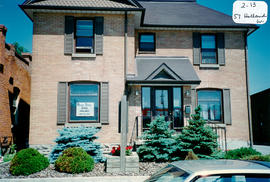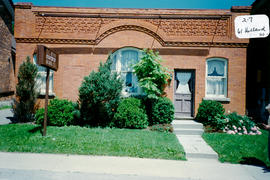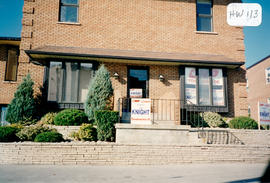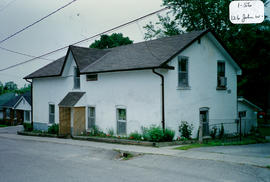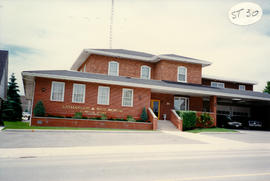- CA BWGPL GJ-HB-2017-03-29-06
- Item
- 1996
Part of George Jackson fonds
The mid-block building located on the north side at 57 Holland Street West was built in the Eclectic Edwardian style in 1900-1920. It has been the home of many people over the years, including Ken Sawdon (who later moved to Mt. Pleasant), Dr. R.H. Judge, and Steve and Margaret Molokach and son John (market gardeners across the tracks behind the Bradford Bureau Kiosk).
The two-storey, ‘L’-shaped building with a hipped roof has a simple, smooth, brick form with broad, extended eaves and large, symmetrically-placed, window openings. Large windows with stained glass in the transoms at the main floor windows are another Edwardian feature. The contrasts between the rusticated stone base, the smooth-brick surface above, and the textured wood shingles at the gable are Queen Anne features. The hipped roof with a top, curb cap is an Italianate feature. This building has brick, masonry construction and a rusticated-block foundation. According to the 2000 inventory, the single-storey entrance and the narrow shutters are modern additions. (1, 2, 3)
George Jackson

